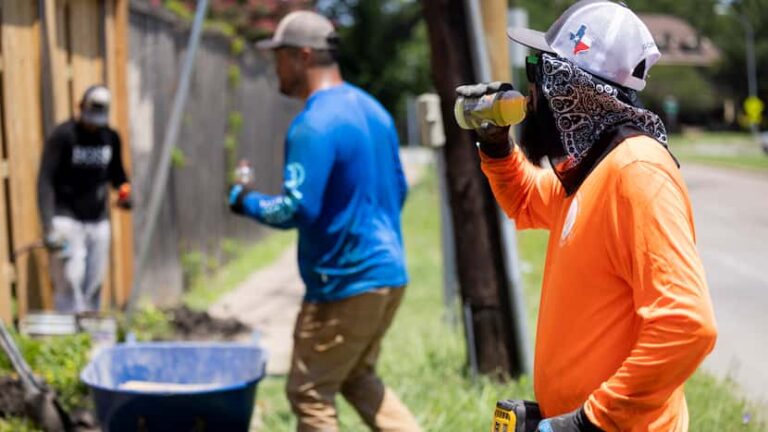Dangerous heat waves are worsening in key areas of Dallas and could impact vulnerable populations, advocates say.
Those districts include the Bishop Arts District, Medical District and West Dallas, according to a new urban heat island effect study. Temperatures in these areas were 10 degrees warmer than in other parts of the city.
A heat island is an urbanized area that has higher temperatures than the surrounding countryside.
Buildings and roads absorb and emit more solar heat than natural landscapes. According to the Environmental Protection Agency, areas with large concentrations of these structures and limited green space become “heat islands.”
Other areas identified as “heat islands” in the study include Love Field, Uptown, Oak Lawn, Downtown, Deep Ellum, the Design District, and Market Center.
“Heat doesn't actually discriminate,” City Councilwoman Carolyn King Arnold said at a press conference about the study's findings. She said: “What we understand and are increasingly focused on is that when heat exceeds normal heat, it continues to impact our health.”
The idea of mapping the hottest places in a city is to pinpoint them and allow cities to make decisions about how to combat extreme heat for the well-being of their residents, says Dallas Environmental Quality and Sustainability Carlos Evans, director of the bureau, explained.
The study was conducted in August with volunteers recording temperatures across the city three times a day at different times.
In 2023, Texas experienced a record heat wave with triple-digit temperatures, and more than 20 people died from heat-related illnesses in Dallas and Tarrant counties, coroners in both counties announced. The number of emergency patients visiting hospitals related to fever has also increased rapidly.
The nine routes surveyed included several points of interest, including City Hall, St. Philip's School, Fish Trap Lake, the Joppa District, the Dallas Zoo, and the McComas Bluff Landfill.
Some of these areas have also been identified as “environmental justice communities” with batch plants and shingle manufacturers located nearby, Evans noted.
Dallas joined other cities, including Salt Lake City, Oklahoma City and Sedona, in the National Oceanic and Atmospheric Administration's 2023 Urban Island Mapping Campaign.
“I don't have time to wait.”
Rose Jones, a Dallas anthropologist and extreme heat researcher, said city officials are moving in the right direction by participating in such studies. Still, you must take action now because “there is no time to wait.”
Jones, founder of Rapid Anthropology Consulting, said officials already know which regions are most affected by the heat and collecting more data will help, but vulnerable populations will He said that solutions are needed now to prevent people from suffering from extreme heat waves.
Councilors noted that some work is already underway. For example, the nonprofit Texas Tree Foundation is working closely with the city to plant more trees in heat island areas.
“I look forward to working with the members of the City Council on the opportunity to expand green space and energy measures to reduce the effects of the heat island effect in our district,” said City Councilor Kathy Stewart, Chair of the Parks, Trails and Environment Committee. I promised to find it.” .
Jones proposed that Dallas join other cities, including Miami and Los Angeles, in creating a “chief heat officer” position to focus on solutions and preparedness for heat-related emergencies.
“Problems like this are going to require new thought processes, new ways of engaging people, new approaches,” Jones said.
Evans said such a position would depend on the budgetary appetite of council members and the city manager. Meanwhile, his department continues its heat island research in collaboration with the recovery department.
As the research continues, the city map will be completed and is expected to be completed in late July or August. Evans said about 200 volunteers will be needed.
Heat mapping results are available at www.greendallas.net.

